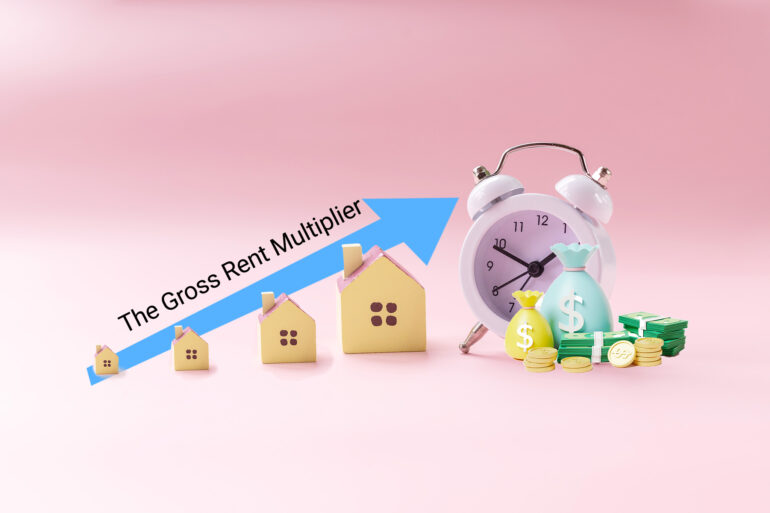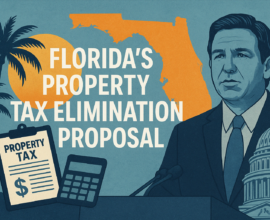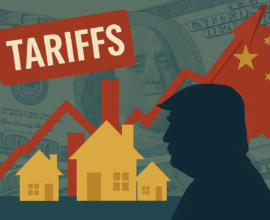What is The Gross Rent Multiplier? – A No Brainer Tool for Real Estate Investing
When it comes to real estate investing, there are many tools in the toolbox. Understanding what each tool does and how to use it is crucial for success.
One of the most crucial tools for real estate investors is the gross rent multiplier (GRM). It’s a no-brainer tool that can help you make smart decisions when buying and selling properties.
Gross Rent Multiplier is the ratio between the gross annual rental income and the purchase price of a piece of real estate.
But what if you don’t have a lot of experience with real estate? Or what if you’re not sure where to start? If that sounds like you, this guide is for you!
In this guide, we’ll walk you through the basics of how your gross rent multiplier works — and how to use it to ensure your investment properties are worth their weight in gold.
What is Gross Rent Multiplier?
We have just witnessed a housing recovery that has been unprecedented in the history of the United States. The Gross Rent Multiplier is a relatively simple concept to understand for real estate investors.
According to WallStreetPrep, Gross Rent Multiplier is the ratio between the gross annual rental income and the purchase price of a piece of real estate. It is calculated by dividing the gross annual rental income by the purchase price of the property.
When used in the context of a property, this represents the number used to calculate the potential value and can help you determine whether a property is worth purchasing.
Since you also pay other expenses when you buy an investment property, it’s called “Gross” because it also includes expenses without limitation:
- Utilities
- Repairs and maintenance
- Insurance
- Management
- Property tax
The Gross Rent Multiplier will help you determine if a property you are analyzing has a potential cash flow and if the property will be profitable. It is an especially useful tool in the analysis process because it helps rule out those properties where the cost of acquisition outweighs the return on investment that we can expect.
Key Takeaways:
- Purchase Price. This is the total cost of buying the property, including the down payment and closing costs. It does not include any repairs or upgrades made after purchase.
- Annual Gross Income. This is the total amount of income generated from renting out your property at market rates for 12 months.
How to Calculate the Gross Rent Multiplier (GRM)
Every area of the real estate industry has its own set of acronyms and jargon to describe the people, processes, and terminology. One acronym is GRM — it stands for Gross Rent Multiplier.
When used in the context of a property, this represents the number used to calculate the potential value and can help you determine whether a property is worth purchasing. It is a measure of the property’s yield, which is the annual income generated by the property expressed as a ratio of its purchase price or market value.
It is imperative to understand what factors affect GRM values, how they relate to each other, and how they may change over time.
The GRM is calculated by dividing the estimated rental income by the purchase price of a property; this will provide an idea of how long it would take to recoup your investment.
The formula for calculating Gross Rental income is:
GRM = Price of Property/Gross Annual Rental Income
You can also learn more about our online calculator for GRM, available for premium members with access to our unlimited features.
For example
If you buy a property for $100,000 and it generates $10,000 in annual rental income, the gross rent multiplier is 10.
Therefore, A GRM of 10 = $100,000 ÷ $10,000
This means that for every dollar invested in the property, you will receive $10 back in annual rental income. In other words, your return on investment (ROI) will be 10%.
This can be useful for comparing different properties: if one property has a higher gross rent multiplier than another but yields less than its competitor, it indicates that it may not be as profitable or sustainable as the other option.
It’s also best if you know:
- How much it costs to purchase the property
- What your operating expenses are per month
- How many months out of the year you can rent it out
This will give you an idea of what your annual income would be if you were to buy a rental property and then rent it out for 12 months of the year.
Factors to Assess the Property’s GRM
The GRM is a measure of the absorptive capacity of the market. Investors use it to determine the viability of a property for a specific purpose and to compare the potential performance of different properties across markets.
Other factors can affect how much profit you’ll make on an investment property, such as whether tenants pay their rent reliably and consistently.
It is imperative to understand what factors affect GRM values, how they relate to each other, and how they may change over time. Below are the factors that influence them:
- Location
- Building age
- Building condition
- Land area and location
- Size of the building and layout configuration
- Tenant mix and demographics
How Do You Use the Gross Rent Multiplier?
A lot of new investors ask, “How much can I buy this property for? How much can I rent it out for? Should I be buying this property or another one?” or even more simply, “Is this a good property?” The answer to all these questions is a gross rent multiplier (GRM).
Here’s how you can use the GRM:
- Compare gross rents with purchase prices to see whether a property will be profitable for you.
- Estimate the expected rental income for a property before making an offer on it.
- Calculate what your net operating income (NOI) will be after paying all your expenses and debt obligations on a given property.
What Is a Good GRM?
A good Gross Rent Multiplier is a key factor for success for all real estate investors, especially for beginners. Remember, there is no perfect GRM that works every time.
It will vary by location and depend on the condition of the property and the demand for that particular area. Still, a good real estate investor gets a feel for what’s going on in a neighborhood and can make educated guesses about where the GRM should be based on his or her knowledge of the area in question.
A low GRM indicates that investors can expect a high return on their investment, while a high GRM would indicate a low return on investment. A good gross rent multiplier is typically considered to be at least above one and below five.
However, other factors can affect how much profit you’ll make on an investment property, such as whether tenants pay their rent reliably and consistently. Therefore, it’s crucial to consider all relevant factors before deciding to buy a particular property.
The idea behind the GRM is that the appreciation of real estate value is directly proportional to the income produced by such properties. In effect, properties with higher incomes are expected to appreciate faster than those with lower incomes.
Crunch the Numbers
The Gross Rent Multiplier is a useful tool for real estate investors. Remember that many factors go into making a successful investment, and the GRM is just one of them. However, it can be a helpful starting point to determine whether a property will be profitable.
With careful consideration of all aspects of the deal, including location, the potential for capital appreciation, and rental income, you should be able to find a property that meets your investment goals. Whether you’re buying an apartment building or a single-family home, it’s important to put in the time and research required to make sure you’ve chosen wisely!








